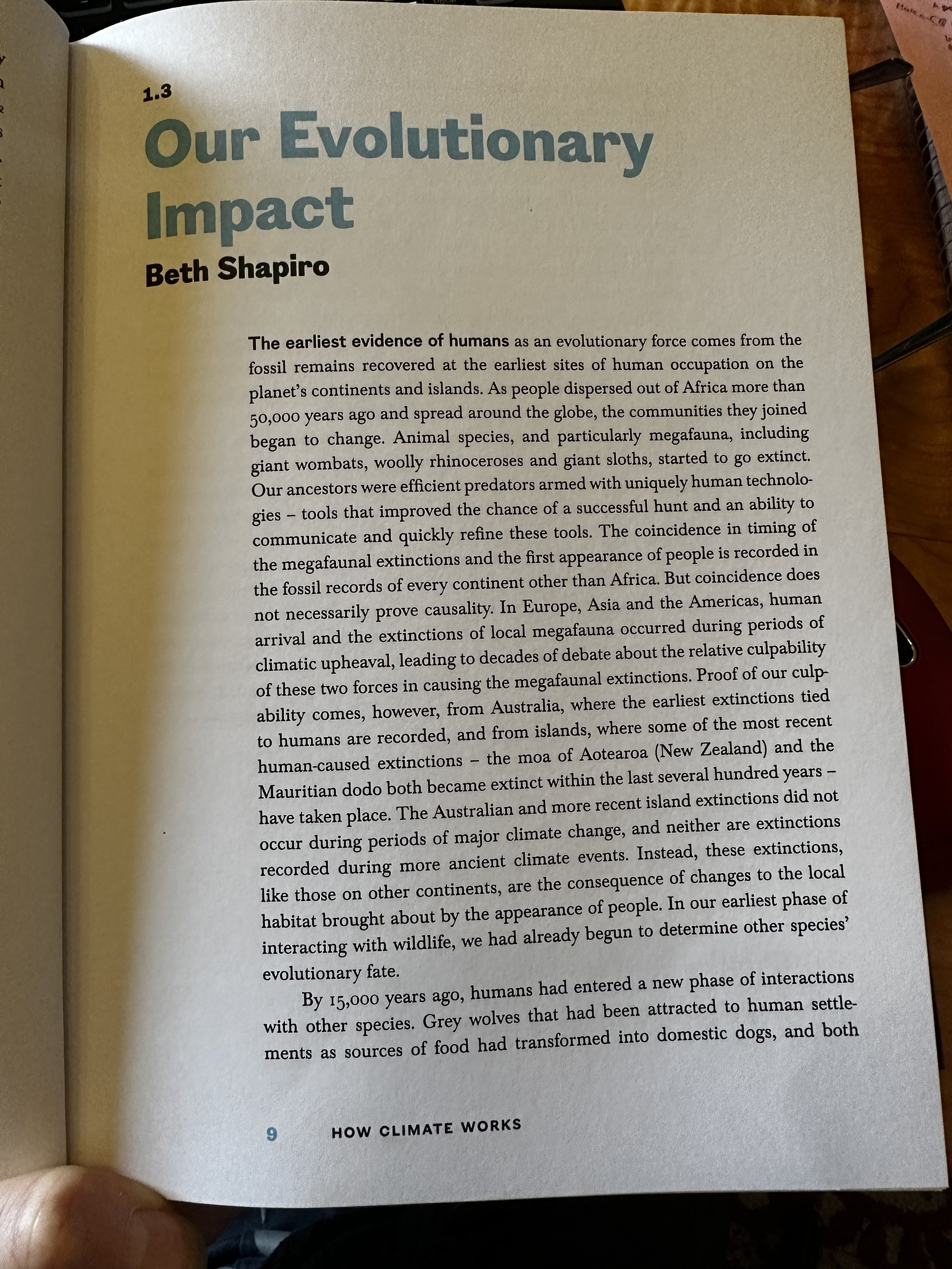The Climate Book, Day 4
Day 4, of The Climate Book posts: "We are the evolutionary force that will decide the fate of every species, as well as the habitats in which those species live."
Today, Essay 1.3: "Our Evolutionary Impact"
Key Excerpts:
1. As people dispersed out of Africa more than 50,000 years ago and spread around the globe, the communities they joined began to change. According to fossil records, animal species, and particularly megafauna (giant wombats, woolly rhinoceroses, etc) started to go to extinct.
2. The coincidence in timing of the megafaunal extinctions and the first appearance of people is recorded in the fossil records of every continent other than Africa, but there were also contributing climatic upheavals happening at the same time in Europe, Asia and the Americas.
3. In Australia and surrounding islands, extinctions did not occur during periods of major climate change. Instead, these extinctions (as well as more recent extinctions on other continents) are the consequence of changes to the local habitat brought about by the appearance of people.
4. Around 10,000 years ago, the last ice age had ended and the climate improved, and populations grew. People began adopting hunting strategies that sustained prey populations rather than driving them to extinction, becoming herders vs hunters. They also planted food, and chose to propogate seeds that produced more food per plant or were ripe for harvest at the same time as others, becoming farmers vs gatherers.
5. By the turn of the 20th century, the success of us as a species of herders and farmers had turned wildlands into farmland or rangeland, degraded by continuous use. Air and water quality began to decline and extinction rates were on the rise.
6. Our ancestors then entered into a new phase of interaction with other species, becoming protectors, trying to guard endangered species and habitats from the dangers of increasingly human world. With this transition, humans became the evolutionary force that would decide the fate of every species, as well as the habitats in which these species live.
